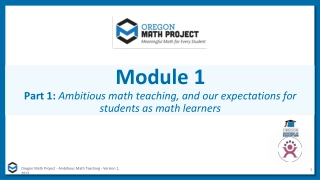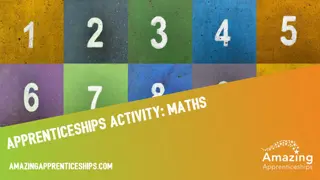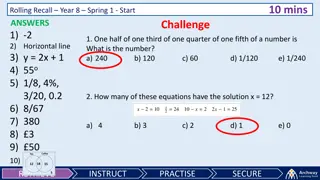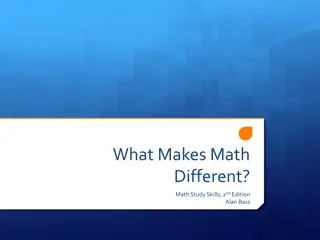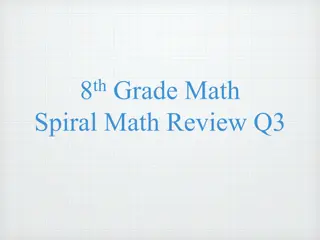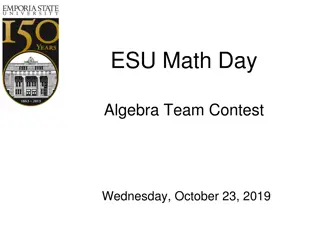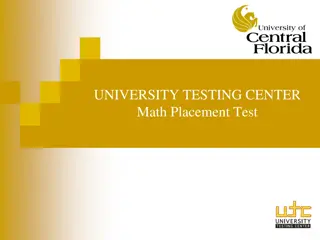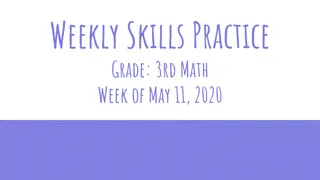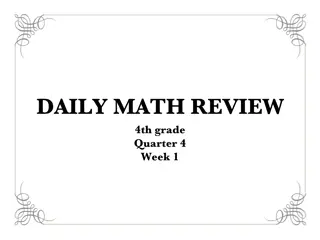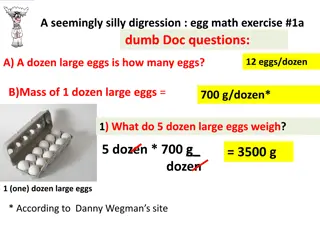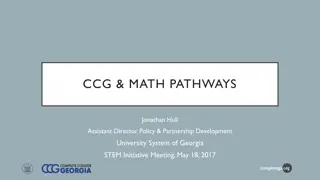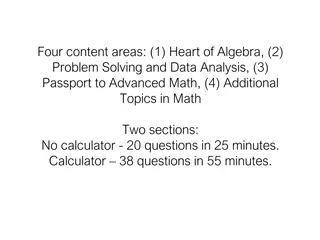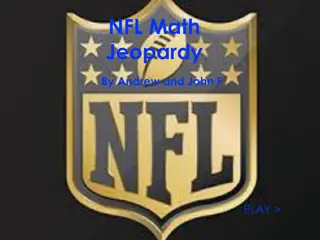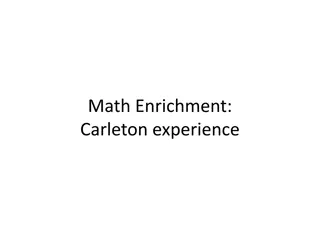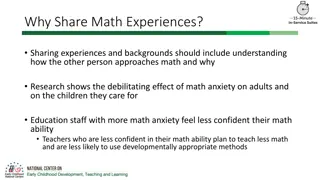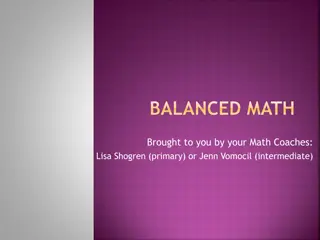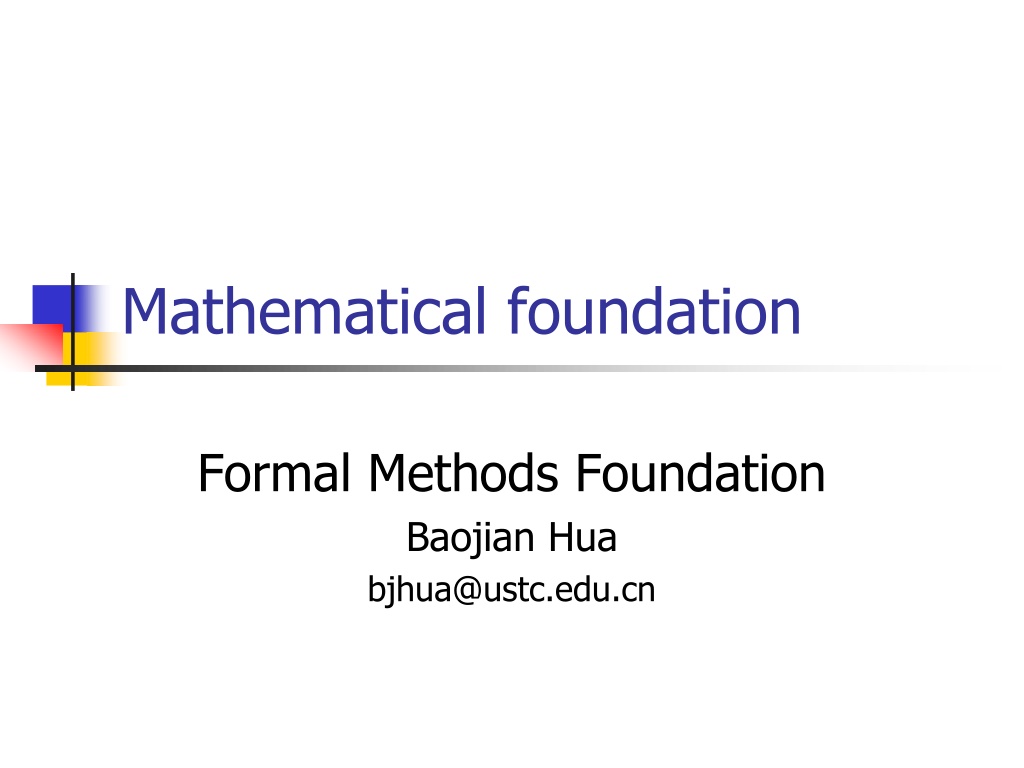
Mathematical Foundations and Computation Complexity Overview
Explore key concepts in basic mathematics such as sets, relations, functions, and computation complexity results. Understand topics like power sets, equivalent classes, and notation in complexity theory. Discover the foundations essential for formal methods in mathematics.
Download Presentation

Please find below an Image/Link to download the presentation.
The content on the website is provided AS IS for your information and personal use only. It may not be sold, licensed, or shared on other websites without obtaining consent from the author. If you encounter any issues during the download, it is possible that the publisher has removed the file from their server.
You are allowed to download the files provided on this website for personal or commercial use, subject to the condition that they are used lawfully. All files are the property of their respective owners.
The content on the website is provided AS IS for your information and personal use only. It may not be sold, licensed, or shared on other websites without obtaining consent from the author.
E N D
Presentation Transcript
Mathematical foundation Formal Methods Foundation Baojian Hua bjhua@ustc.edu.cn
Goals We review some of the key results from basic mathematics Set, relation, function Basic computation complexity results Context free grammar Induction We assume you ve learned some of this from elementary math course We just give a quick review, to make this course self-contained
Sets Set, set operations, power set: , ,~, , , ,? The powerset of given set A: ?(A) = {B | B A} And: |?(A)| = 2?
Relation A relation R on sets A, B: R A*B Example: A={1, 3, 7}, B={a, b, c}, R = {(1, a), (7, c)} Dom(R) = #1 R Range(R) = #2 R The relation R can be generalized to n sets.
Function A function F is a special relation R: For x=y in A, R(x) = R(y) Intuitively, the function is a 1 to 1 map. The function is total, if: Dom(F) = A, Or else the function is partial. Often write a function F as: F: A B
More Relation A relation R is equivalent: Reflexive: (x, x) R Symmetry: (x, y) R, then (y, x) R Transitive: (x, y) R, (y, z) R, (x, z) R
Equivalent class For any a A, and R is a equivalent relation, a s equivalent class: a = b (a,b) R} Example: 2 ? ? [0] = { , -2, 0, 2, } [1] = {..., -3, -1, 1, 3, }
Some notations on complexity Upper, lower, tight bounds: O ? , ? , (?) Example: To search in an array: O ? To sort n unsorted numbers: ? ??? Search in a balanced BST: (? ???) Complexity: O lg? , O ? , O(??), O(2?)
Some notations on complexity Undecidability: There is NO computer program to do it! Example: Given an arbitrary program p as input, write an algorithm to test: whether or not this program p will terminate. void f(){ return; } void f(){ for(;;); } This is the famous haltingproblem We ll see several other undecidable problems in future lectures
undecidable != unsolvable Reveal some limitations of (Turing machine-based model of) programming One can use approximations Not the exact answer, but usable And various fragments of general problems are still decidable, thus solvable Don t rely on computer programming! Ex., do experiments
P complexity If the complexity of problem is of O(??), we say this problem complexity is in P (Polynomial) This considered to be the easiest Almost all of the algorithms in your textbook belong to this kind Checking the result is also P Ex., finding the largest number in an array (the algorithm)
NP complexity If finding the solution to some problem is at least O(2?) (hard), justifying the solution is O ??(easy) This problem is in NP (Non-deterministic Polynomial, not Non-Polynomial) Examples (on blackboard) subset sum problem 0-1 knapsack problem traveling salesman problem
P =? NP If justifying the solution is so easy (O ??), so is it possible that the NP problem can also be solved in P? This is the famous P =? NP problem One of the 7 Millennium Prize Problems selected by the Clay Mathematics Institute Still open P NP
NP-Complete (NPC) All problems in NP can be transformed to a subset of NP-complete Intuitively, this is the hardest problems in NP If NPC has can be solved in polynomial time, so does NP The first NPC is SAT Cook, 1971 Now, several hundreds More later in this course NPC P NP
NP-hard NP-hard is even more difficult than NP Even the solution may not be justified in polynomial time So generally considered beyond the modern CS P NP NP-hard

